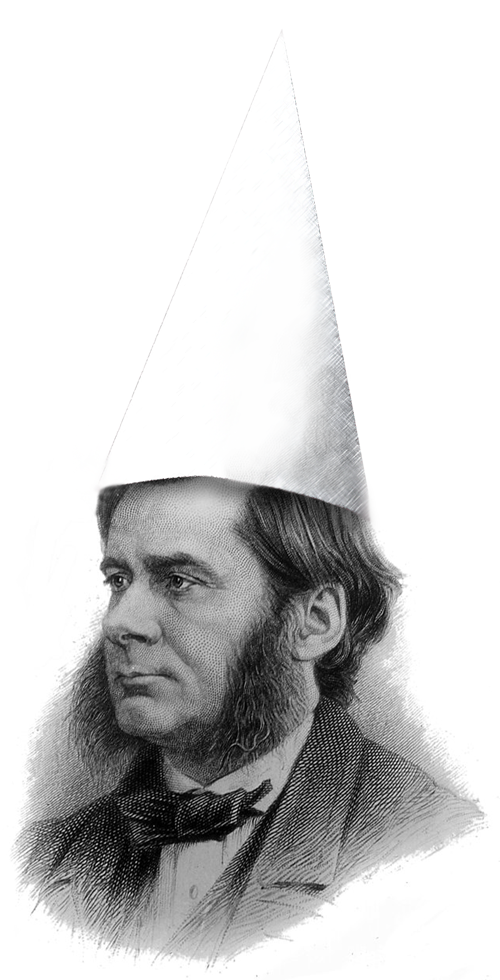 “How extremely stupid not to have thought of that!” was Thomas Henry Huxley’s reflection on reading Darwin’s Origin of Species. What might elicit such a reaction from a contemporary biologist? Today the question is answered by Rudolf Raff, Distinguished Professor and James H. Rudy Professor of Biology at Indiana University. His latest book is a memoir, Once We All Had Gills: Growing Up Evolutionist in an Evolving World.
“How extremely stupid not to have thought of that!” was Thomas Henry Huxley’s reflection on reading Darwin’s Origin of Species. What might elicit such a reaction from a contemporary biologist? Today the question is answered by Rudolf Raff, Distinguished Professor and James H. Rudy Professor of Biology at Indiana University. His latest book is a memoir, Once We All Had Gills: Growing Up Evolutionist in an Evolving World.
When he heard of Darwin’s concept of natural selection, his friend the biologist Thomas Huxley famously remarked “How extremely stupid not to have thought of that!” I’m sure on occasion that others have had the same thought. My own sense of that feeling arises from realizing that when I began thinking and writing about the science that we now call evo-devo, I failed to realize how misleading the dominant concept of gene regulatory evolution of the 1970s was.
Insects, earthworms, jellies, sea stars, and kittens are all manifestly dissimilar to each other in body form. They are all animals, but so unlike each other in anatomy that they are placed in distinct phyla within the animal kingdom, as are the members of an additional thirty other animal phyla. The most prominent evolutionary biologist of the 1970s, Ernst Mayr, held that it would be futile to suppose that genetic homologies should extend across such widely different body plans. Thus the genes that regulated embryonic development in each animal species, like the body plans themselves, would not be shared across the animal phyla.
The exciting discovery that developmental regulation had a genetic basis that was linked to evolution was made in 1963 by geneticist Ed Lewis. He studied the family of genes (now known as Hox genes) that regulated segmental development in the fruit fly Drosophila. Lewis suggested that these genes very likely arose by duplication during fly evolution. However, these genes were observed to be linked in a gene cluster known only from flies, which suggested that they were unique to fly development. In addition, at that time a distinction was being realized by molecular biologists between structural genes that encoded plain workaday proteins such as globins and the more exciting regulatory genes that governed development and other processes. The best data of the day suggested that those regulatory genes evolved very rapidly.
At the time, we readily accepted the notion that regulatory genes were not shared across phyla, yet we all also knew and accepted Darwin’s second major hypothesis set forth in the Origin of Species. That is the concept that all organisms stem from a common ancestry deep in the past, and that all life is related. This realization came from the pattern of shared similarities seen among groups of organisms so universally portrayed in the phylogenetic trees that festoon textbooks and museums all around us. Thus, all mammals share a common ancestry, and deeper, all vertebrates do likewise, and still deeper yet, all animal phyla share a common ancestor. That means that all those different phyla have a common ancestry and therefore, so do their genes. If that’s so, it means that all those regulatory genes do too. Thus we seem to have suffered from an enormous evolutionary cognitive dissonance that somehow was apparently invisible to us. It was all in plain view. We never saw it.
The shattering of the cognitive dissonance about regulatory genes ultimately came from brilliant experimental data produced from several labs in the 1980s that showed that those fly Hox genes were present all across the animal kingdom. In fact, those genes did similar things in regulation of embryonic development across most phyla. Hox genes were not alone. Other studies of genes across phyla were made possible by techniques for cloning genes and determining their DNA sequences. These showed that regulatory genes of many kinds were widely shared all around the phyla, sometimes regulating similar developmental steps as in other phyla, sometimes quite distinct ones.
Darwin’s vision of a common ancestry of all animal phyla meant that the evolutionary relationships of animals consisted of a bush of ancestors and descendants. The phylogenetic trees of these evolving lineages were based on comparative anatomy and the fossil record. Now the phylogenetic tree was confirmed by a source of data that was completely unknown during his time. Common descent left its mark not only in anatomy, but in the genes inherited by an organism. Common descent of genes did not involve only structural genes, but also the genes that play roles in the generation of body form and behavior through the embryological development of organisms.
This tale of regulatory genes shows something about how science generates hypotheses, sometimes quite incorrect ones, which eventually meet the shock of novel discoveries. When that happens, our new hypotheses have to take new data into account, and research begins to focus on new ideas. However, it leaves unanswered for me why I couldn’t recognize the dissonance. I was in good company, but still: “How extremely stupid not to have thought of that!”
